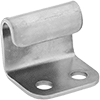Filter by
Material
Color
Weight Capacity
Buckle Type
End Fitting Type
Thread Size
Component
Turnbuckle Type
DFARS Specialty Metals
Export Control Classification Number (ECCN)
Load Securement Type
End Fitting Material
Body Material
Buckle Material
Maximum Adjustment
Overall Length
Maximum Temperature
Hook Opening Width
Thickness
Most Likely Products
All Results
Material Handling
Fastening and Joining
Power Transmission
Containers, Storage, and Furniture
Facility and Grounds Maintenance





























































































